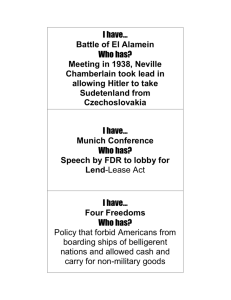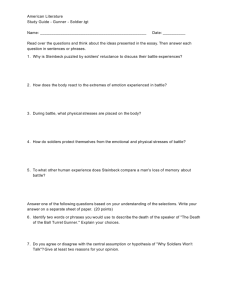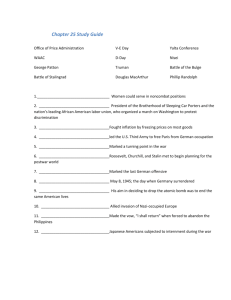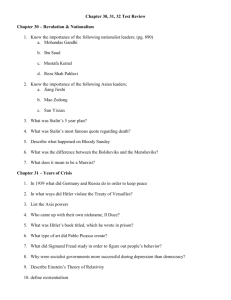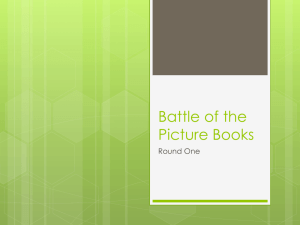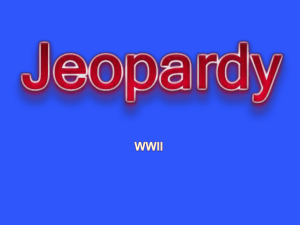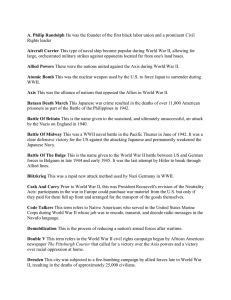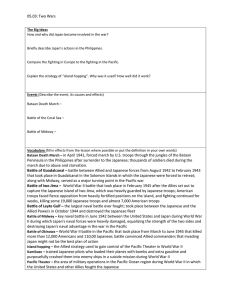Study Guide WWII Quiz 2
advertisement
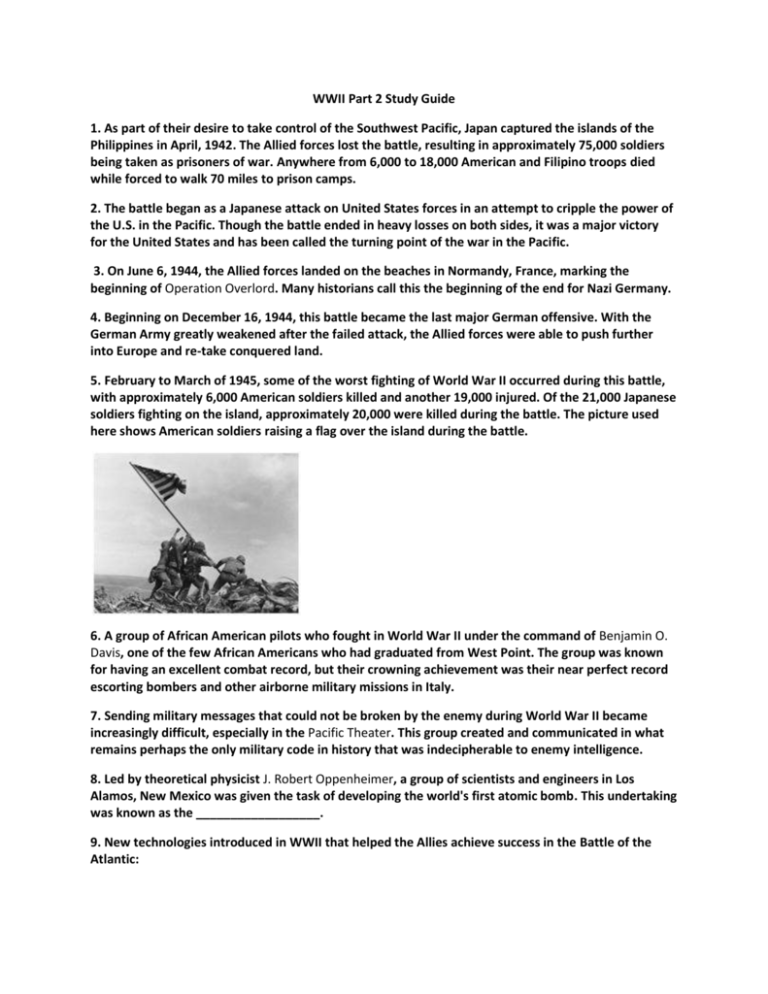
WWII Part 2 Study Guide 1. As part of their desire to take control of the Southwest Pacific, Japan captured the islands of the Philippines in April, 1942. The Allied forces lost the battle, resulting in approximately 75,000 soldiers being taken as prisoners of war. Anywhere from 6,000 to 18,000 American and Filipino troops died while forced to walk 70 miles to prison camps. 2. The battle began as a Japanese attack on United States forces in an attempt to cripple the power of the U.S. in the Pacific. Though the battle ended in heavy losses on both sides, it was a major victory for the United States and has been called the turning point of the war in the Pacific. 3. On June 6, 1944, the Allied forces landed on the beaches in Normandy, France, marking the beginning of Operation Overlord. Many historians call this the beginning of the end for Nazi Germany. 4. Beginning on December 16, 1944, this battle became the last major German offensive. With the German Army greatly weakened after the failed attack, the Allied forces were able to push further into Europe and re-take conquered land. 5. February to March of 1945, some of the worst fighting of World War II occurred during this battle, with approximately 6,000 American soldiers killed and another 19,000 injured. Of the 21,000 Japanese soldiers fighting on the island, approximately 20,000 were killed during the battle. The picture used here shows American soldiers raising a flag over the island during the battle. 6. A group of African American pilots who fought in World War II under the command of Benjamin O. Davis, one of the few African Americans who had graduated from West Point. The group was known for having an excellent combat record, but their crowning achievement was their near perfect record escorting bombers and other airborne military missions in Italy. 7. Sending military messages that could not be broken by the enemy during World War II became increasingly difficult, especially in the Pacific Theater. This group created and communicated in what remains perhaps the only military code in history that was indecipherable to enemy intelligence. 8. Led by theoretical physicist J. Robert Oppenheimer, a group of scientists and engineers in Los Alamos, New Mexico was given the task of developing the world's first atomic bomb. This undertaking was known as the __________________. 9. New technologies introduced in WWII that helped the Allies achieve success in the Battle of the Atlantic: 10. President of the United States from 1933 until his death in 1945, the only president in history to serve more than two terms. He is well-known for helping the struggling U.S. economy during the Great Depression by organizing the New Deal programs. He also worked closely with British Prime Minister Winston Churchill before and during World War II, and he strongly supported the establishment of the United Nations, an organization that would seek to promote peace in the postwar world. 11. Served as president from April 1945 until 1953. Regarding his role in WWII, he is probably most well-known for his decision to drop the atomic bombs on two Japanese cities, Hiroshima and Nagasaki, in hopes of ending the war with Japan as quickly as possible. 12. The U. S. general who led military efforts in Europe and North Africa during World War II, and was later elected president of the United States from 1953-1961. 13. Japanese pilots who in World War II made deliberate suicidal crashes into enemy targets, usually ships. 14. During World War II, the Allies adopted this strategy to move across the Pacific to defeat Japan. 15. The basic cargo ship used during WWII, it was relatively cheap and quickly made because most were welded instead of riveted. The cargo vessels traveled in groups (convoys) escorted by navy warships to avoid German u-boat attacks. Bank: Manhattan Project Bataan Death March Battle of the Bulge Dwight Eisenhower Franklin Delano Roosevelt Harry Truman Iwo Jima Navajo Code Talkers Tuskegee Airmen Kamikaze Liberty Ships Battle of Midway Island Hopping D-Day Sonar and radar


